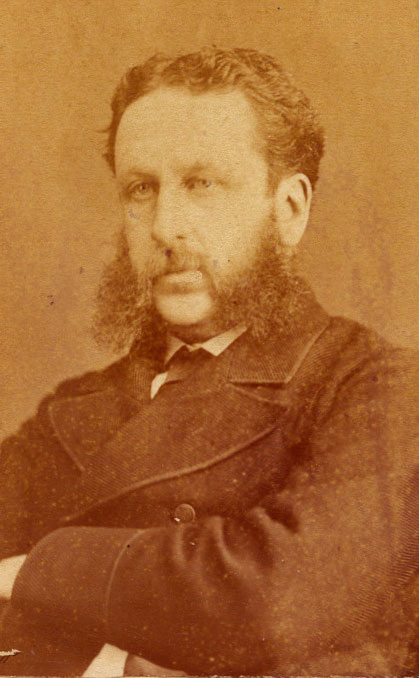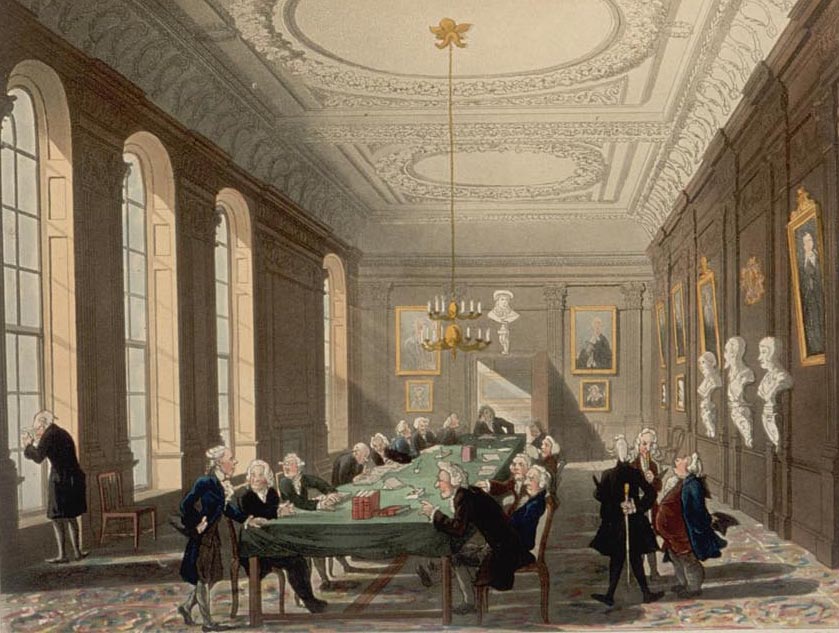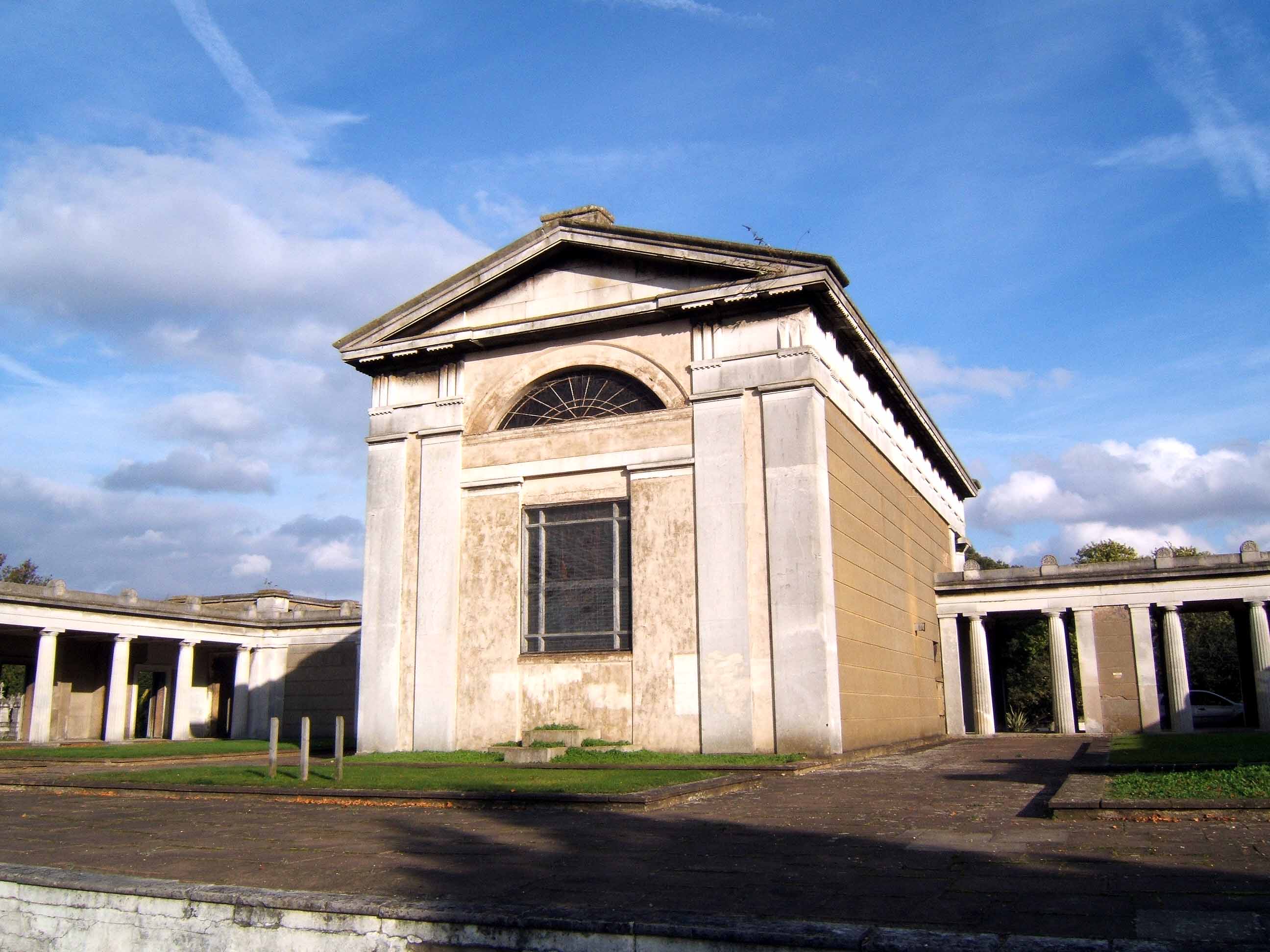|
Octavius Sturges
Octavius Sturges (1833 – 3 November 1894) was a British paediatrician who coined the term "chorea". Early life He was born in London in 1833, the eighth son (hence the name) of John and Elisabeth Sturges. He attended King's College School and then was sent to the East India Company's Addiscombe Military Seminary, Croydon. After graduation in 1852 he served two years in the army as an officer in the East India Company in Bombay, but his military career ended in his erroneous diagnosis of aortic aneurysm. In 1857 he returned to the UK. Career In July 1858 he enrolled at Emmanuel College, Cambridge to study medicine and graduated B.A. in 1861, M.B. in 1863, and M.D. in 1867. He then began practice in St George's Hospital, becoming medical registrar in 1863. He left to be assistant-physician at the Westminster Hospital in 1868 and became full physician in 1875. He was made assistant-physician to the Hospital for Sick Children in Great Ormond Street in 1873, and full physician ... [...More Info...] [...Related Items...] OR: [Wikipedia] [Google] [Baidu] |
Chorea (disease)
Chorea, or (rarely) choreia, () is an abnormal involuntary movement disorder, characterized by quick movements of the hands or feet. It is one of a group of neurological disorders called dyskinesias. The term ''chorea'' is derived , as the movements of the body is comparable to dancing. The term hemichorea refers to chorea of one side of the body, such as chorea of one arm but not both (analogous to hemiballismus). Presentation Chorea is characterized by brief, semi-directed, irregular movements that are not repetitive or rhythmic, but appear to flow from one muscle to the next. These 'dance-like' movements of chorea often occur with athetosis, which adds twisting and writhing movements. Walking may become difficult and include odd postures and leg movements. Unlike ataxia, which affects the quality of voluntary movements, or Parkinsonism, which is a hindrance of voluntary movements, the movements of chorea and ballism occur on their own, without conscious effort. Thus, c ... [...More Info...] [...Related Items...] OR: [Wikipedia] [Google] [Baidu] |
East India Company
The East India Company (EIC) was an English, and later British, joint-stock company that was founded in 1600 and dissolved in 1874. It was formed to Indian Ocean trade, trade in the Indian Ocean region, initially with the East Indies (South Asia and Southeast Asia), and later with East Asia. The company gained Company rule in India, control of large parts of the Indian subcontinent and British Hong Kong, Hong Kong. At its peak, the company was the largest corporation in the world by various measures and had its own armed forces in the form of the company's three presidency armies, totalling about 260,000 soldiers, twice the size of the British Army at certain times. Originally Chartered company, chartered as the "Governor and Company of Merchants of London Trading into the East-Indies," the company rose to account for half of the world's trade during the mid-1700s and early 1800s, particularly in basic commodities including cotton, silk, indigo dye, sugar, salt, spices, Potass ... [...More Info...] [...Related Items...] OR: [Wikipedia] [Google] [Baidu] |
Addiscombe Military Seminary
The East India Company Military Seminary was a British military academy at Addiscombe, Surrey, in what is now the London Borough of Croydon. It opened in 1809 and closed in 1861. Its purpose was to train young officers to serve in the East India Company's Presidency armies, own army in India. The institution was formally known as the East India Company Military Seminary (a name the cadets always disliked) until 1855, when the name was changed to the East India Company Military College.Bourne 1979, p. 206. In 1858, when the college was taken over by the government, it was renamed the Royal India Military College. Colloquially, it was known as Addiscombe Seminary, Addiscombe College, or Addiscombe Military Academy. The Seminary was a sister institution to the East India Company College in Hertfordshire, which trained civilian "writers" (clerks). In military terms it was a counterpart to the Royal Military Academy, Woolwich, Royal Military Academy at Woolwich and the Royal Military ... [...More Info...] [...Related Items...] OR: [Wikipedia] [Google] [Baidu] |
Emmanuel College, Cambridge
Emmanuel College is a constituent college of the University of Cambridge. The college was founded in 1584 by Sir Walter Mildmay, Chancellor of the Exchequer to Elizabeth I. The site on which the college sits was once a priory for Dominican monks, and the College Hall is built on the foundations of the monastery's nave. Emmanuel is one of the 16 "old colleges", which were founded before the 17th century. Emmanuel today is one of the larger Cambridge colleges; it has around 500 undergraduates, reading almost every subject taught within the University, and around 200 postgraduates. Among Emmanuel's notable alumni are Thomas Young, John Harvard, Graham Chapman and Sebastian Faulks. Three members of Emmanuel College have received Nobel Prizes: Ronald Norrish, George Porter (both Chemistry, 1967) and Frederick Hopkins (Medicine, 1929). In every year from 1998 until 2016, Emmanuel was among the top five colleges in the Tompkins Table, which ranks colleges according to end-of-year ... [...More Info...] [...Related Items...] OR: [Wikipedia] [Google] [Baidu] |
St George's Hospital
St George's Hospital is a large teaching hospital in Tooting, London. Founded in 1733, it is one of the UK's largest teaching hospitals. It is run by the St George's University Hospitals NHS Foundation Trust. It shares its main hospital site in Tooting in the London Borough of Wandsworth, with City St George's, University of London, which trains NHS staff and carries out advanced medical research. The hospital has around 1,300 beds and most general tertiary care such as accident and emergency, maternity services and care for older people and children. However, as a major acute hospital, St George's Hospital also offers specialist care for the more complex injuries and illnesses, including trauma, neurology, cardiac care, renal transplantation, cancer care and stroke. It is also home to one of four major trauma centres and one of eight hyper-acute stroke units for London. St George's Hospital also provides care for patients from a larger catchment area in the South Eas ... [...More Info...] [...Related Items...] OR: [Wikipedia] [Google] [Baidu] |
Westminster Hospital
Westminster Hospital was a hospital in London, England, founded in 1719. In 1834 a medical school attached to the hospital was formally founded. In 1939 a newly built hospital and medical school opened in Horseferry Road, Westminster. In 1994 the hospital closed, and its resources were moved to the new Chelsea and Westminster Hospital at the old St Stephen's Hospital site on Fulham Road. History Foundation The Westminster Hospital was established in 1719 as a charitable society "for relieving the sick and needy at the Public Infirmary in Westminster", and promoted by Henry Hoare (1677–1725), otherwise "Good Henry", son of Sir Richard Hoare and a partner in Hoare's Bank, and his associates the writer William Wogan, a vintner called Robert Witham, and the Reverend Patrick Cockburn. In 1719, a house was rented in Petty France, to accommodate the new Infirmary for the Sick and Needy, which opened in 1720 with 10 beds. The following document, which may be styled the f ... [...More Info...] [...Related Items...] OR: [Wikipedia] [Google] [Baidu] |
Great Ormond Street Hospital
Great Ormond Street Hospital (informally GOSH, formerly the Hospital for Sick Children) is a children's hospital located in the Bloomsbury area of the London Borough of Camden, and a part of Great Ormond Street Hospital for Children NHS Foundation Trust. The hospital is the largest centre for child heart surgery in Britain and one of the largest centres for heart transplantation in the world. In 1962 it developed the first heart and lung bypass machine for children. With children's book author Roald Dahl, it developed an improved shunt valve for children with hydrocephalus, and non-invasive (percutaneous) heart valve replacements. Great Ormond Street performed the first UK clinical trials of the rubella vaccine, and the first bone marrow transplant and gene therapy for severe combined immunodeficiency.Breakthroughs The hospital is the largest centre for research and postgraduate teaching in children's health in Europe. In 1929, J. M. Barrie donated the copyright ... [...More Info...] [...Related Items...] OR: [Wikipedia] [Google] [Baidu] |
Royal College Of Physicians
The Royal College of Physicians of London, commonly referred to simply as the Royal College of Physicians (RCP), is a British professional membership body dedicated to improving the practice of medicine, chiefly through the accreditation of physicians by examination. Founded by royal charter from King Henry VIII in 1518, as the College of Physicians, the RCP is the oldest medical college in England. The RCP's home in Regent's Park is one of the few post-war buildings to be listed at Grade I. In 2016 it was announced that the RCP was to open new premises in Liverpool at The Spine, a new building in the Liverpool Knowledge Quarter. The Spine opened in May 2021. History The college was incorporated as "the President and College or Commonalty of the Faculty of Physic in London" when it received a royal charter in 1518, affirmed by Act of Parliament in 1523. It is not known when the name "Royal College of Physicians of London" was first assumed or granted. It came into use aft ... [...More Info...] [...Related Items...] OR: [Wikipedia] [Google] [Baidu] |
Hansom Cab
The hansom cab is a kind of horse-drawn carriage designed and patented in 1834 by Joseph Hansom, an architect from York. The vehicle was developed and tested by Hansom in Hinckley, Leicestershire, England. Originally called the Hansom safety cab, it was designed to combine speed with safety, with a low centre of gravity for safe cornering. Hansom's original design was modified by John Chapman and several others to improve its practicability, but retained Hansom's name. ''Cab'' is a shortening of '' cabriolet'', reflecting the design of the carriage. It replaced the hackney carriage as a vehicle for hire; with the introduction of clockwork mechanical taximeters to measure fares, the name became ''taxicab''. Hansom cabs enjoyed immense popularity as they were fast, light enough to be pulled by a single horse (making the journey cheaper than travelling in a larger four-wheel coach) and were agile enough to steer around horse-drawn vehicles in the notorious traffic jams of ... [...More Info...] [...Related Items...] OR: [Wikipedia] [Google] [Baidu] |
Kensal Green Cemetery
Kensal Green Cemetery is a cemetery in the Kensal Green area of North Kensington in the Royal Borough of Kensington and Chelsea and the London Borough of Hammersmith and Fulham in London, England. Inspired by Père Lachaise Cemetery in Paris, it was founded by the barrister George Frederick Carden.The Founding of Kensal Green Cemetery , Kensalgreen.co.uk, accessed 7 February 2014 The cemetery opened in 1833 and comprises of grounds, including two conservation areas, adjoining a canal. The cemetery is home to at least 33 species of bird and other wildlife. This distinctive cemetery has memorials ranging from large s housing the rich and famous to many distinctive smaller g ... [...More Info...] [...Related Items...] OR: [Wikipedia] [Google] [Baidu] |







